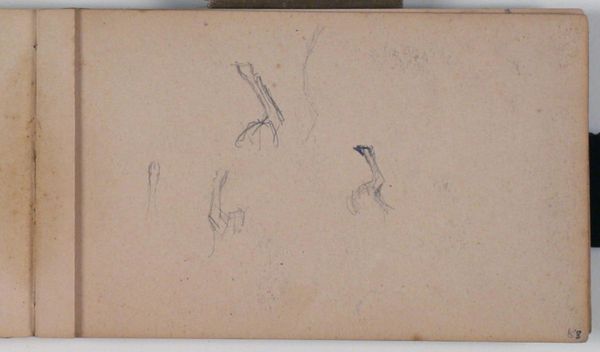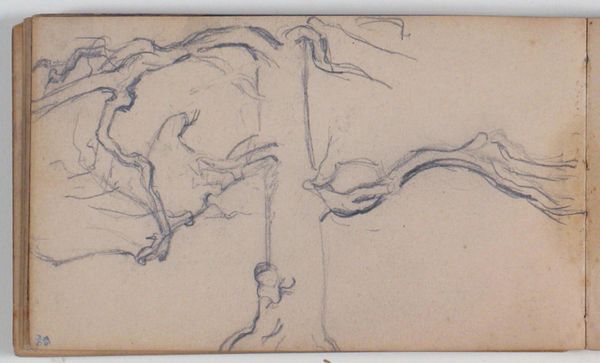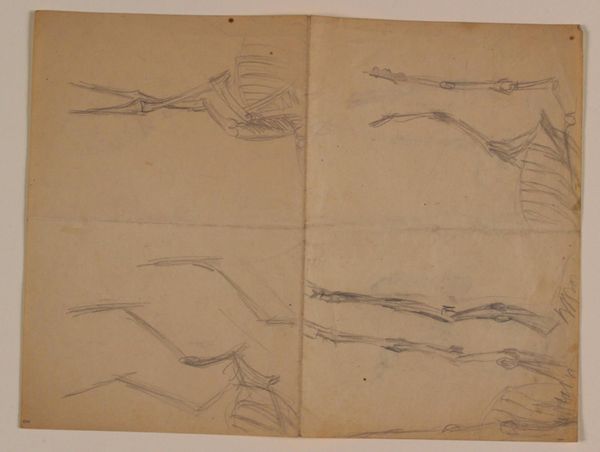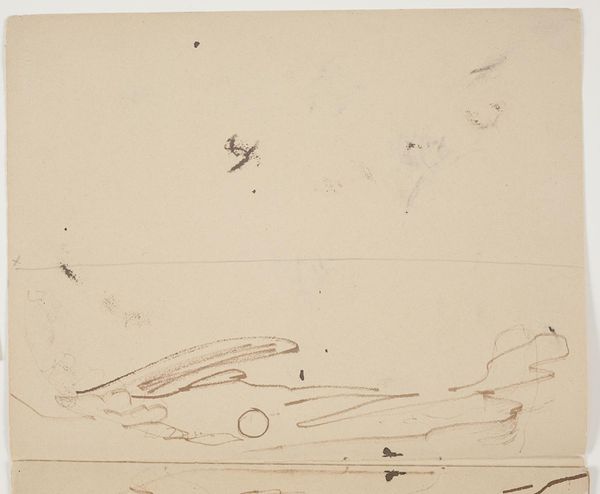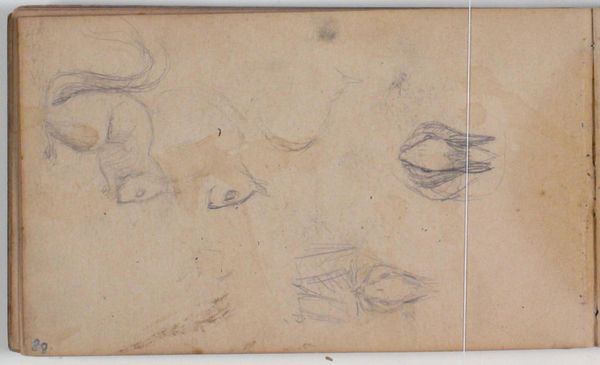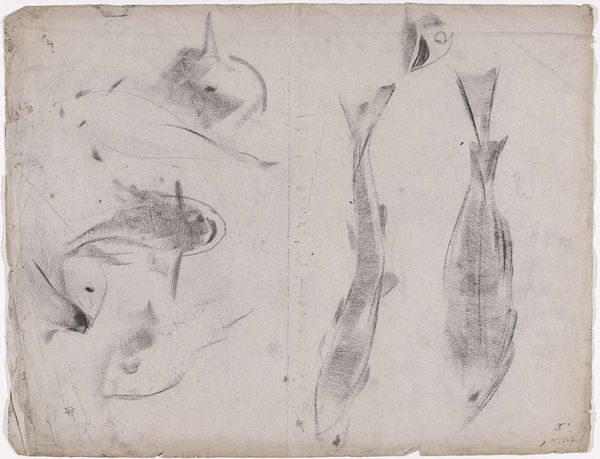
drawing, pencil
#
drawing
#
figuration
#
coloured pencil
#
pencil
#
realism
Dimensions: 101 mm (height) x 168 mm (width) (bladmaal)
Curator: Here we have Niels Larsen Stevns' "Studier af et klovdyrs bagben," created around 1896. The medium appears to be primarily pencil, with hints of colored pencil. What are your initial thoughts? Editor: I’m immediately struck by the vulnerability in these depictions. There's a rawness to the sketched studies of animal limbs—isolated, exposed. The work highlights our historical dependency on animals for various kinds of labor and asks to which extent it is reflected upon. Curator: Indeed, there is something undeniably compelling about its simplicity. Stevns' application of line is interesting here. The delicate strokes describe form with incredible economy, don’t you think? There’s also a definite sense of movement within each study, achieved through the subtle shifts in weight and pressure. Editor: It’s an intentional reduction, yes, but I see a commentary on the position animals are placed in with our history. Their bodies, fragmented and rendered as studies, speak volumes about objectification within labor and our relationship to nature. Are these back legs headed to slaughter? This imagery evokes parallels with contemporary debates around factory farming. Curator: Your reading is compelling. However, isn’t it also valid to consider the intrinsic merit of the work? The elegance of the line, the articulation of form... it's a showcase for technical skill and control, irrespective of its social commentary. Editor: That's hard to accept if we do not recognize the reality it comes from. The aesthetic qualities do not exist independently of broader cultural and social frameworks. To engage with this study only through formal aspects ignores the work's historical embeddedness. Curator: Fair enough. Perhaps in seeking to understand it as a document of animal studies, as well as a display of artistic craftsmanship, is precisely what brings complexity and meaning to the drawing. Editor: Precisely. Acknowledging those dual readings enhances our understanding of how it shapes a wider critical perspective.
Comments
No comments
Be the first to comment and join the conversation on the ultimate creative platform.
